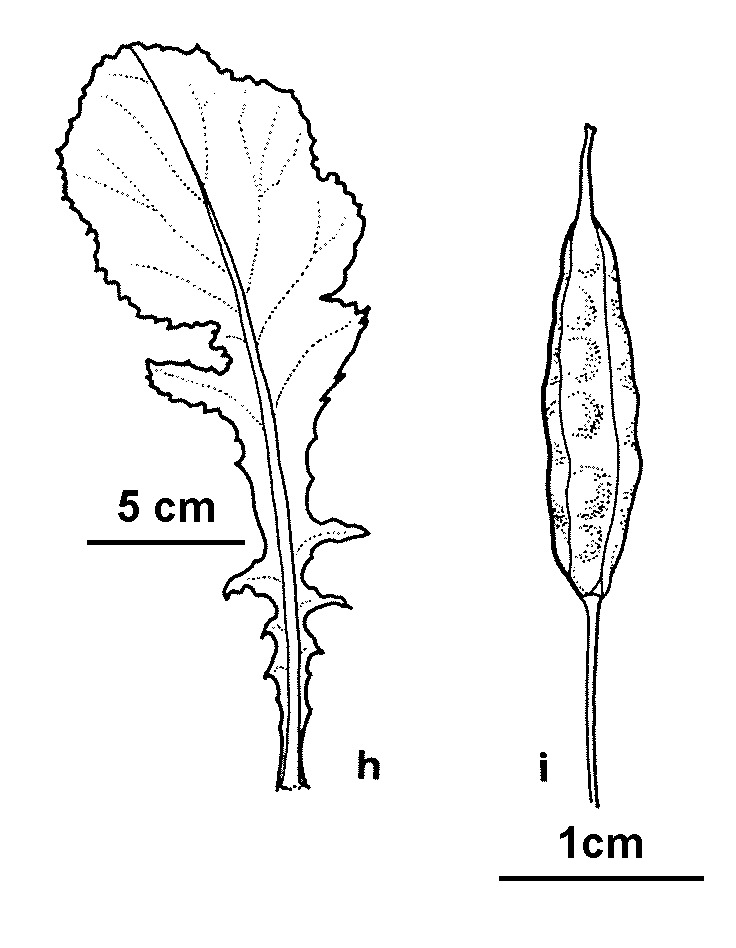Brassica ×juncea
(L.) Czern. Indian Mustard (Brown MustardAnnual. Taproot relatively slight. Stems almost erect, to 1 m high, herbaceous, branched, glabrous. Leaves glaucous; basal leaves to 20 cm long, petiolate, deeply lobed, with a large terminal lobe and 1 or 2 smaller lateral ones, sparsely bristly; upper leaves shortly petiolate, smaller, oblong, oblanceolate or lanceolate; margins toothed or entire, glabrous. Inflorescence with open flowers equalling buds, elongating with age. Sepals inclined, 4–5 mm long; petals 7–9 mm long, pale yellow; stamens erect; ovary sessile. Fruit erect-ascending, 2–6 cm long (including beak), 2–4 mm wide; valves constricted between seeds, midrib prominent, lateral veins forming network; beak narrower than stigma, 4–12 mm long, seedless; pedicel 5–14 mm long; seeds 1–3 mm diam., yellow, brown or grey. Flowers autumn.
MuM, Wim, VVP, GipP, OtP, Gold, CVU, HSF. Naturalised all States except ACT. Probably derived from a hybrid between Brassica rapa and B. nigra, possibly originating independently in both eastern Africa and Asia. Weed of agricultural land in Australia.
Commercial mustard is mostly made by mixing the crushed seed of Brassica ×juncea (B. nigra was used in the past) with that of Sinapis alba.
Entwisle, T.J. (1996). Brassicaceae. In: Walsh, N.G.; Entwisle, T.J., Flora of Victoria Vol. 3, Dicotyledons Winteraceae to Myrtaceae, pp. 399–459. Inkata Press, Melbourne.
 Spinning
Spinning